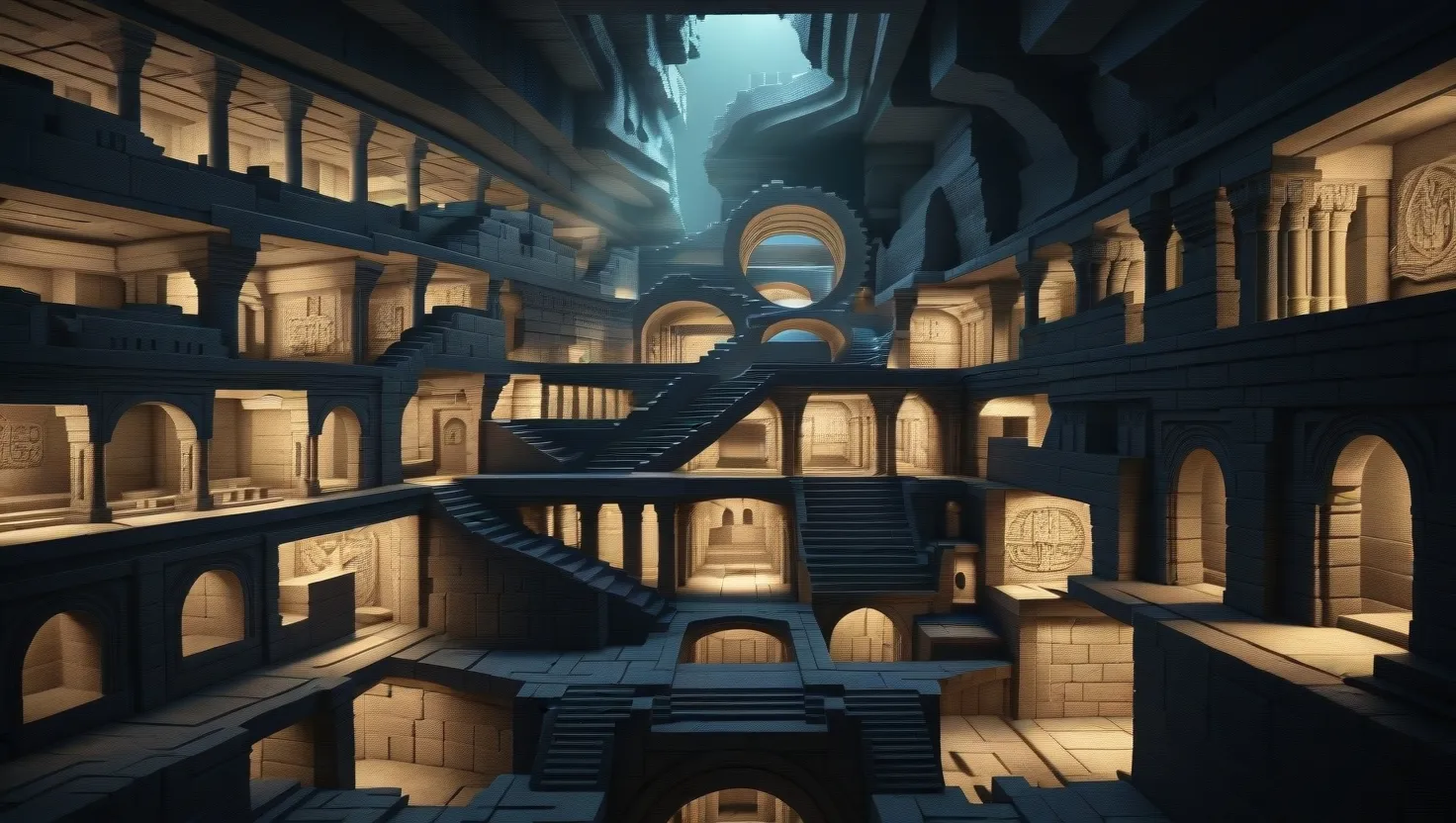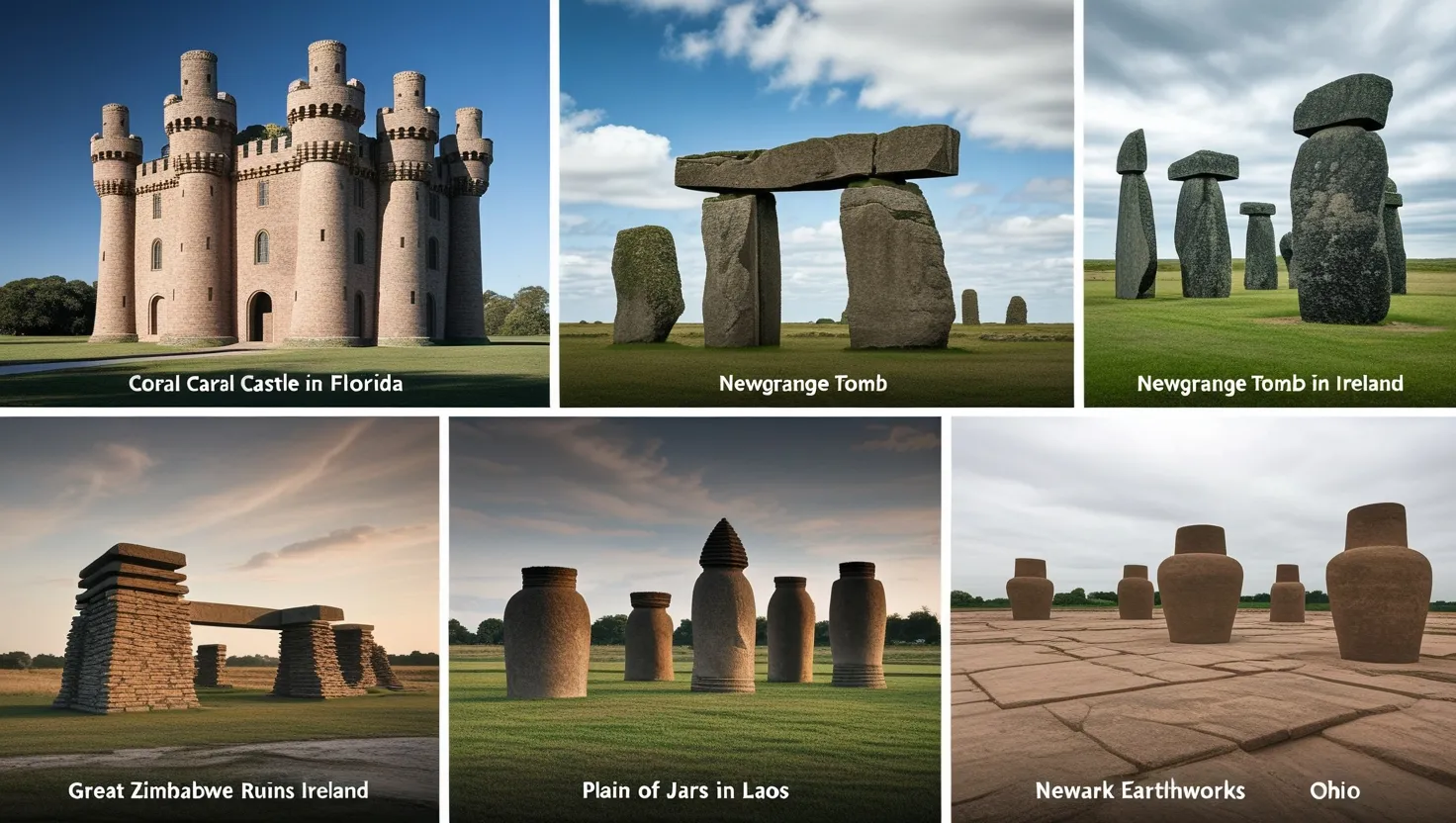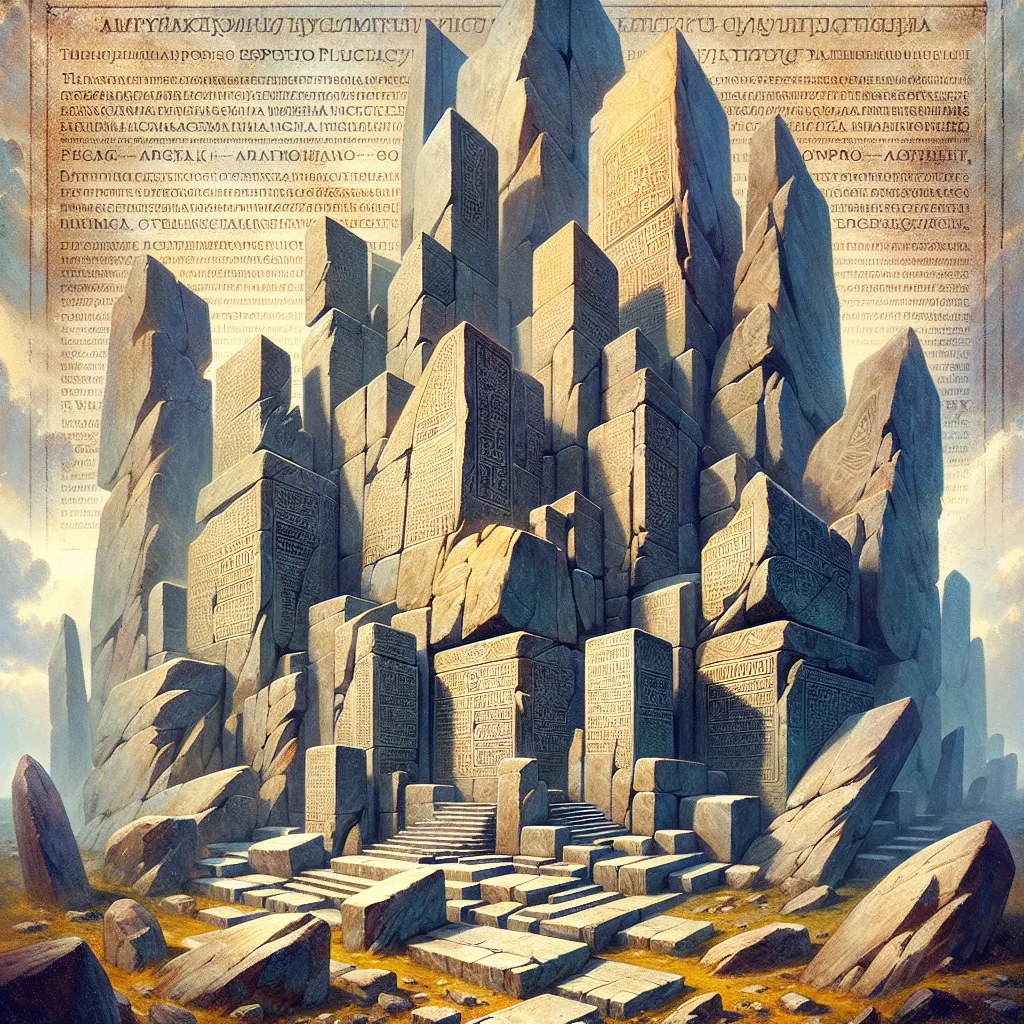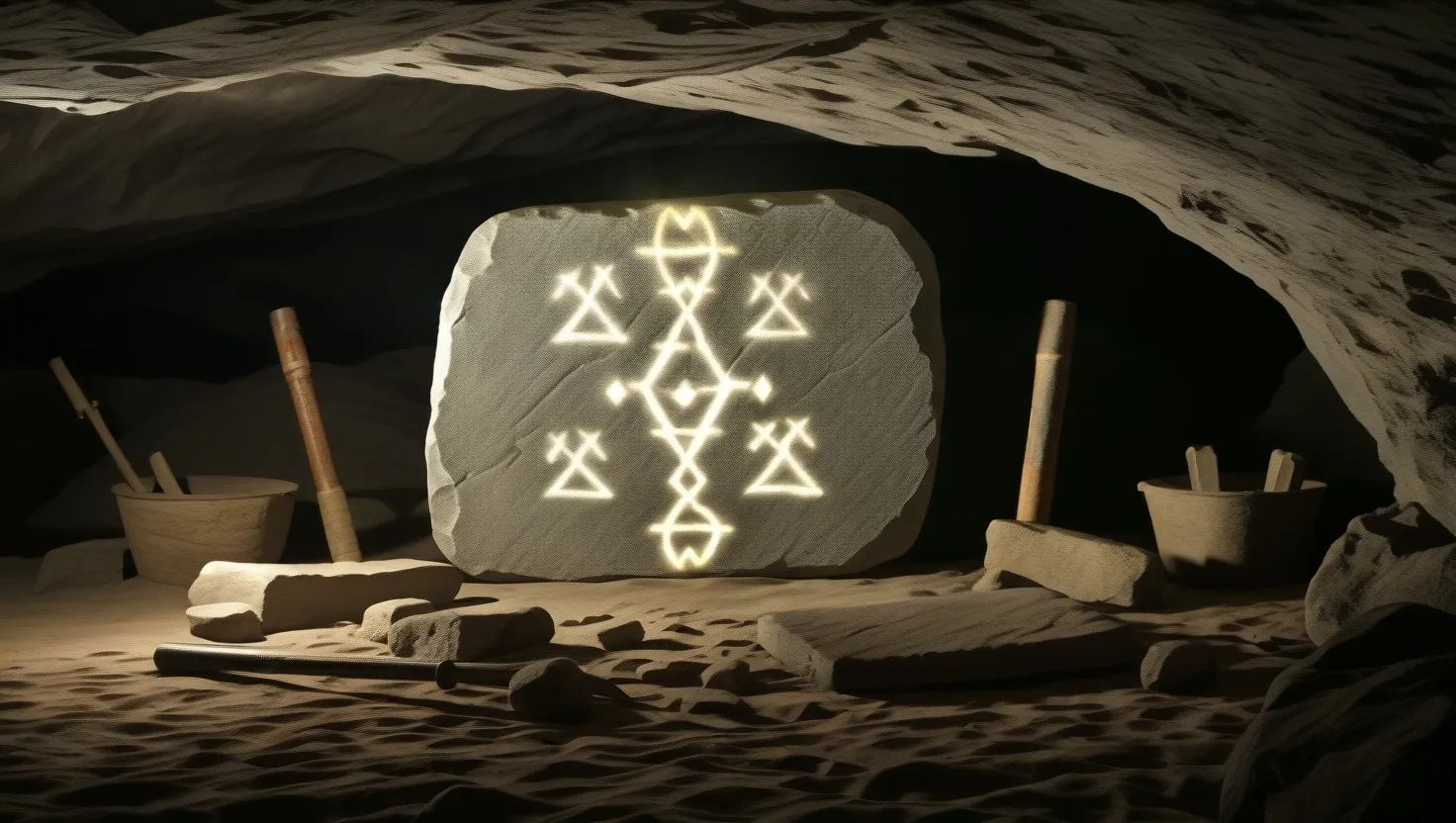As I delve into the mysteries of the earth, I find myself drawn to the enigmatic world of underground structures. These subterranean marvels, often shrouded in mystery, have captivated the imagination of archaeologists, historians, and the general public alike. Here, we will explore five of these intriguing sites, each with its own unique story and unanswered questions.
Derinkuyu Underground City, Turkey
Imagine a city hidden beneath the earth, a labyrinthine network of tunnels and chambers that could shelter thousands. This is Derinkuyu, the largest and most famous of the Cappadocia underground cities in Turkey. Built by early Christians to escape religious persecution, Derinkuyu is a testament to the ingenuity and resilience of its creators.
As you descend into the depths of Derinkuyu, you are greeted by an astonishing array of facilities: food and drink preparation areas, mass storage rooms, stables, wine presses, and even a church. This underground city spans eight levels, with ventilation shafts and water wells that ensured the survival of its inhabitants. The history of Derinkuyu is intertwined with the tumultuous periods of the Roman and Byzantine eras, serving as a sanctuary during the Arab-Byzantine Wars and later against the Mongolian invasions.
What strikes me most about Derinkuyu is its sheer scale and complexity. The tunnels stretch for miles, connecting it to other underground cities like Kaymakli. This underground network was not just a refuge but a fully functional community, hidden from the dangers above. The fact that it remained in use until the 20th century, when the Cappadocian Greek locals were expelled, adds a poignant layer to its history.
Longyou Caves, China
In the province of Zhejiang, China, lies another enigmatic underground wonder – the Longyou Caves. Discovered in 1992 by a local villager, these caves are a series of 36 large, man-made caverns carved into the limestone rock. What is remarkable about the Longyou Caves is their precision and scale; each cave is approximately 100,000 square feet in size, with ceilings as high as 100 feet.
The origins of the Longyou Caves remain a mystery. There are no historical records or inscriptions to provide clues about who built them or why. Theories range from ancient tombs to military bases, but the lack of any definitive evidence leaves us with more questions than answers. The architectural features are equally fascinating – the walls are smooth, and the ceilings are domed, suggesting a high level of engineering skill.
Visiting the Longyou Caves is like stepping into an ancient, abandoned world. The silence is almost palpable, and the sheer scale of the caverns is awe-inspiring. As I walk through these empty spaces, I can’t help but wonder about the lives of those who might have once inhabited them.
Hypogeum of Hal-Saflieni, Malta
On the island of Malta, there is a subterranean structure that predates the pyramids of Egypt – the Hypogeum of Hal-Saflieni. This ancient underground temple complex dates back to around 4000 BC, making it one of the oldest known examples of underground architecture.
The Hypogeum is a multi-level structure, with its deepest level extending over 30 feet below ground. The walls are adorned with intricate stone carvings and red ochre paintings, suggesting a ritual or ceremonial use. The air inside is remarkably stable, with a consistent temperature and humidity level, which has helped preserve the site.
One of the most intriguing aspects of the Hypogeum is its acoustic properties. The chambers are designed in such a way that they amplify and manipulate sound, creating an otherworldly effect. This has led to theories about its use in ancient rituals, possibly involving sound healing or spiritual practices.
Edinburgh Vaults, Scotland
In the heart of Edinburgh, Scotland, lies a network of underground chambers known as the Edinburgh Vaults. These vaults were formed by the arches of the South Bridge, built in the late 18th century. Initially, they housed taverns, workshops, and storage spaces for merchants, but their history took a darker turn.
By the mid-19th century, the vaults had become a haven for the homeless and a hotspot for criminal activity. They were notorious for illegal gambling, whisky distilleries, and even bodysnatching. The conditions were dire, with disease and crime rampant. Eventually, the vaults were abandoned and filled with rubble to prevent further habitation.
Today, the Edinburgh Vaults are said to be one of the most haunted places in the UK. Visitors report strange occurrences – cold gusts of air, apparitions, and eerie sounds. The vaults have been the subject of numerous ghost hunting expeditions and have captured the imagination of many.
Gilmerton Cove, Scotland
Not far from Edinburgh, another mysterious underground site awaits – Gilmerton Cove. This network of tunnels and chambers is carved into the sandstone rock and dates back to the 18th or 19th century, although its exact origins are unclear.
Gilmerton Cove is unique due to its intricate stone carvings and the precision of its construction. The site includes a series of interconnected rooms, a well, and even what appears to be a blacksmith’s forge. Theories about its use range from a secret meeting place for societies to a hideout for smugglers.
What fascinates me about Gilmerton Cove is its enigmatic nature. Unlike other underground structures, it lacks any clear historical context. The carvings and the layout suggest a high level of craftsmanship, but the purpose behind it remains a mystery.
The Challenge of Preservation
Preserving these underground structures is a daunting task. Many are fragile and vulnerable to environmental changes, human activity, and natural disasters. The Derinkuyu Underground City, for instance, was only partially opened to the public in 1969, and even today, visitors must navigate through narrow passages and avoid areas that could be damaged.
The Hypogeum of Hal-Saflieni faces similar challenges. Its delicate stone carvings and paintings require a controlled environment to prevent deterioration. The site is limited to a small number of visitors each day to ensure its preservation.
Unveiling Hidden Cultures
These underground structures offer more than just a glimpse into the past; they reveal hidden aspects of ancient cultures and civilizations. The Derinkuyu Underground City tells us about the resilience and ingenuity of early Christians, while the Hypogeum of Hal-Saflieni provides insights into ancient ritual practices.
The Edinburgh Vaults, despite their dark history, offer a window into the lives of the marginalized and the forgotten. Gilmerton Cove, with its mysterious carvings, hints at secret societies or hidden activities that were once part of everyday life.
As I reflect on these subterranean marvels, I am struck by the complexity and diversity of human history. Each site is a puzzle piece that, when fitted together, forms a richer tapestry of our collective past. They remind us that there is always more to discover, more to learn, and more to appreciate about the world beneath our feet.
In the end, these mysterious underground structures are not just relics of the past but gateways to understanding our shared human experience. They challenge us to think differently about history, architecture, and the lives of those who came before us. And as we continue to explore and study these sites, we may yet uncover secrets that have been hidden for centuries, waiting to be revealed.






